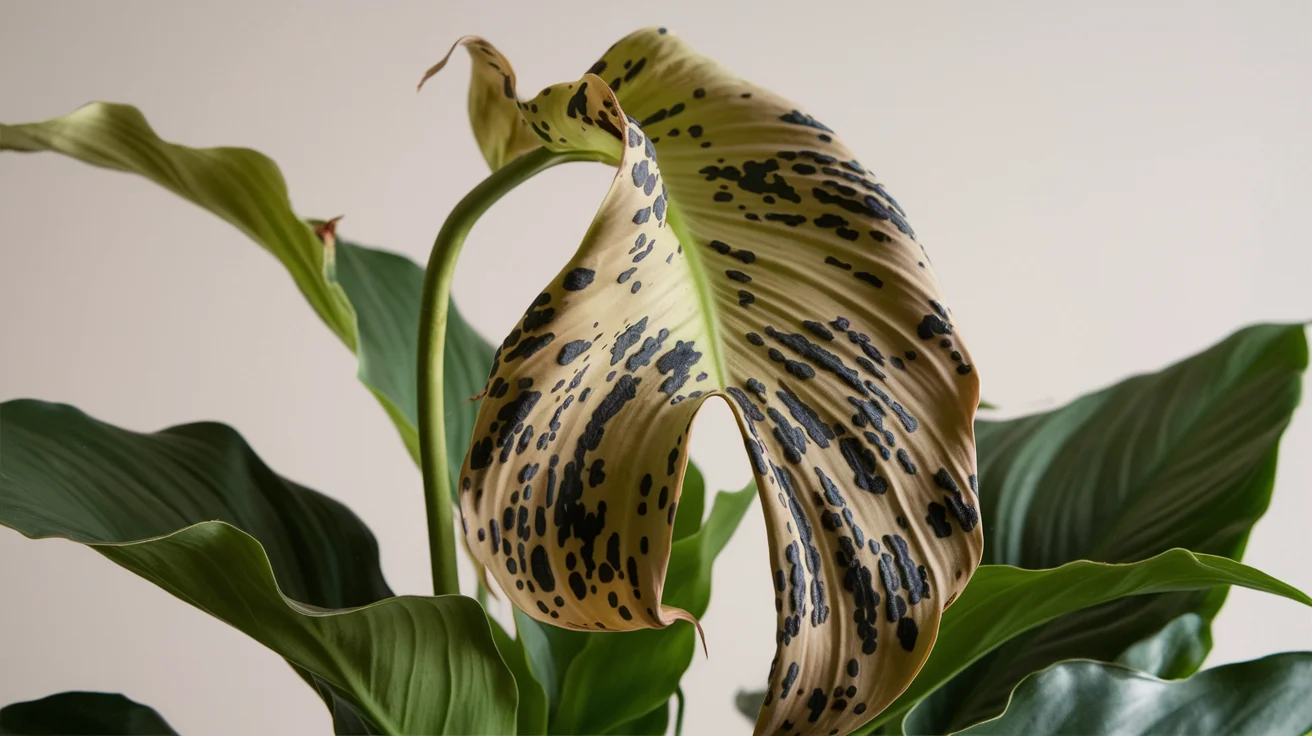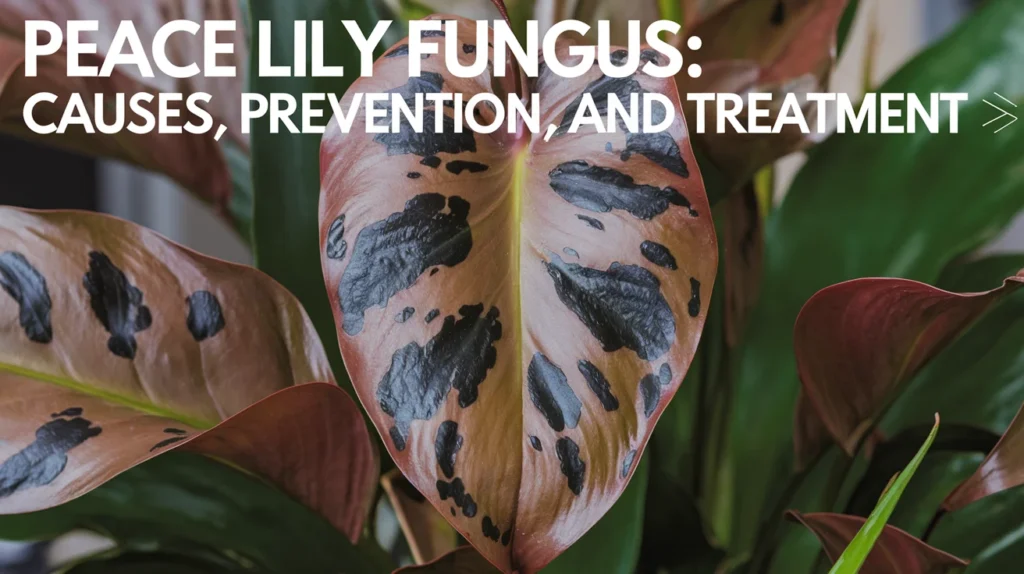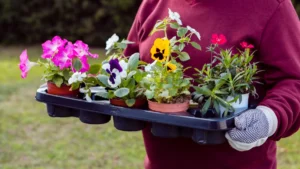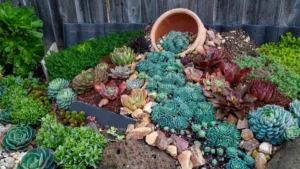Peace Lily is one of the customers’ favorites among houseplants due to its beautiful white flowers and the ability to purify the air. On the other hand, just like all other plants, it may be prone to some issues. One of the most common issues that most peace lily owners face is peace lily fungus. This is a fungal problem that has the potential to negatively affect the health of the plant as it causes discoloration, yellowing of leaves, and in extreme cases, can lead to the death of the plant.
In this article, we shall see what the main aggravating factors for peace lily fungus are, how to avoid it, and how the disease of a peace lily can be treated. Let’s make sure your peace lily is in good shape and free from fungi!
What causes peace lily fungus and what are the risk factors? 🌧️🍂
Fungal infections in peace lilies are often the result of excess moisture. Peace lilies do flourish in such situations, but too much moisture will result in more than just flowers; we are talking of fungi here. Circumstances like excessive watering, inadequate drainage, or high humidity, even after lifting this plant, can cause these infections.
Some of the most common causes of peace lily fungus include:
Overwatering: As long as the soil is wet, there is no time when the roots will not be submerged; hence, they can never breathe. Which is a recipe for rot fungi.
Poor ventilation: Air that is not refreshed or spaces where the level of humidity is high and airflow is lacking can result in the development of mold and mushrooms on the leaves and in the soil.
Infected Soil: There can be fungal particles within the soil, especially when the soil has not been cleaned or if it has been used in a previous planting.
Over Moisture: As peace lilies, like other lilies, thrive in moisture and a warm climate, overmoisture with no provision for air can also provide favorable conditions for fungi.
Common Types of Peace Lily Fungus 🦠🌱
In this area, which primarily concerns the disease phases of peace lilies, some types of fungi can invade these lilies’ leaves. These are the factors that were most highlighted.
1. Leaf Spot Fungus 🌿👁️
A common disease of the foliage, where leaf spot fungus grows on the leaves of the plant. This is evident on the leaves of the plant as dark brown or black dots, some of which are surrounded by yellow coloration. If left untended, the tissues become more necrotic and severe, including the whole leaf withering away.
2. Powdery Mildew 🌾🧂
A fungus that manifests like a white or gray powder coat on the surface of the leaves of plants. Caused by high levels of humidity where very poor air flow is present. These fungi attack not only the beauty of your plant but, after some time, also the health of the plant.
3. Root Rot 🌿⚠️
Root rot refers to root failure owing to poor drainage and moist conditions, which in turn promote the growth of pathogens. During root rot, it is observed that the roots have discolored and have softened. This in turn affects the roots’ functionality of uptake of water and nutrients. When advanced gagaism rectification is out of reach, a peace lily root rot situation is likely to be damaging.
4. Anthracnose 🌾🔍
Leaves, stems, and flowers can be affected by this parasitic problem. Remarkably, it leads to the blackening and drying up of the leaf’s fringe. In severe cases, it can cover the whole plant, leading to premature shedding of stems.

Symptoms of Peace Lily Fungus 😱📝
What clinical features would suggest a fungal infection in your peace lily? Here are some ways in which one would be able to identify the condition:
- Yellowing Leaves: One of the stress response symptoms seen in peace lilies, yellowing of leaves is typically indicative of the presence of a fungal infection, but usually with the recolonization of other symptoms such as spotting or mildew.
- Spots and Patches on Leaves: Yellowing of the leaves makes them unattractive, and this is not the case with fungal spots, patches, and powdery mildew.
- Wilting Even When Adequate Watering is Done: A peace lily would likely wilt while proper watering is done, which could be due to the root being infected with decay.
- Odor Emission from Soil or Substrates: In the circumstance that the soil has an earthy or a rotten odor, it may be indicative of root rot.
- Brown or Black Tips on Leaves: This symptom, most importantly with yellow ringing or wilting, may also accompany fungal diseases such as anthracnose.
How to Avoid Fungus on Peace Lily 🛡️🌟
There is no safer way to safeguard your peace lily from fungal attacks other than preventing them in the first place. These are some of the preventive measures that you can take:
1. Stop providing excessive water. 🚰❗
Overwatering is among the major blunders many plant owners make. Peace lilies appreciate the moisture in the soil; excess water or stale water may ruin them. Water your plant once the first layer (or the top inch) of soil is dry and ensure that the pot is well-drained.
2. Increase Breeziness 💨🌬️
When you keep your peace lily, ensure that the position is such that air can penetrate and move around. Avoid congested places or enclosed areas that have stagnant air. Sufficiently ventilated spaces and gentle breezes from a window or a fan will help to balance humidity to a reasonable level, and thus the chances of fungi are minimized.
3. Keep an eye on humidity. 💧🌡️
Peace lilies need a humid environment, but something more than that can be a breeding ground for mold. Use a humidity meter to check how high or low it is in the room, and try to keep it at an average level. If the air feels too moist, try a dehumidifier, or arrange the plants with enough space in between to allow for ventilation.
4. Avoid Contaminated and Reused Soil 🌱🧴
When changing the pot of your peace lily, be sure to use a new potting mix to minimize the risk of digging up any fungal spores. Do not reuse the growing medium from the previous plants unless it is disinfected.
5. Clean the leaves. 🍃🧽
Dusting the leaves regularly with a damp cloth will clear away dust and debris, and even fungal spores. It will also enhance the leaf photosynthesis process.

How to Treat Peace Lily Fungus 🩺🌡️
If your peace lily has already been attacked by the fungal infection, you need not panic! Under a good atmosphere, you can bring it back to normal. Here’s how: how to cure a peace lily of fungus.
1. Cut Off Affects Leaves ✂️🍂
To begin with, any infected leaves, a leaf stalk, or any other parts of the plant tending to be diseased should be removed. Cut off the areas of the plant that are affected, using clean, sterile scissors. This helps stop further infestation of other healthy plants by the fungus.
2. Use fungicide. 🧪🛑
Among cures for various diseases, including fungal, there are a number of fungicide products. Choose a houseplant fungicide and be sure to follow the directions for use. Other safe and gentle materials, such as neem oil, are usually effective against fungi.
3. Change the pot. 🪴🔄
In case the roots are also infected, then you would have to change the pot of the peace lily to fresh and clean soil. Take out the plant from its pot, remove the soiled old substrate, and cut the diseased roots. The plant should be placed in a fresh planting kit that has adequate drainage.
4. Alter watering methods and schedule. 💧🌻
Do understand that watering is not excessive for the flowering plant peace lily. Optimize your watering pattern and the time intervals between the watering so that the soil can crack and dry out at some point. In addition, do not forget to make sure that any extra water can escape from the pot.
Conclusion: Caring for your Peace Lily in a safe way. 🌿💚
The peace lily is a gorgeous and very hardy plant, although it is still prone to various fungal diseases. Understanding the reasons behind naming and control is helpful in dealing with peace lily fungus problems. In case you have noticed any signs of fungus, you should take proper measures to correct the situation and save your peace lily from further damage.
All your peace lilies require is love and further preservation, and they will be around for years, delighting you with their stunning beauty!


















